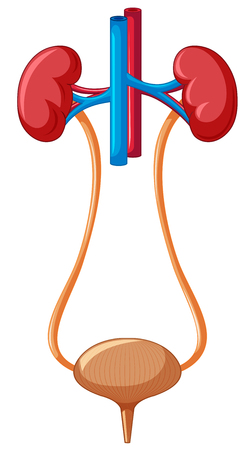Understanding Dual Diagnosis
What Does Dual Diagnosis Mean?
Dual diagnosis is a term used when someone experiences both a substance use disorder (like alcohol or drug addiction) and a mental health condition (such as depression, anxiety, or bipolar disorder) at the same time. In the United States, this is sometimes called “co-occurring disorders.” People facing dual diagnosis have two different health challenges that often interact and make each other worse.
How Common Is Dual Diagnosis in the United States?
Dual diagnosis affects millions of Americans every year. According to the Substance Abuse and Mental Health Services Administration (SAMHSA), about 17 million adults in the U.S. had both a mental illness and a substance use disorder in 2020. The table below shows how common dual diagnosis is among different groups:
| Group | Estimated Number with Dual Diagnosis |
|---|---|
| All U.S. Adults (18+) | ~17 million |
| Young Adults (18-25) | ~1.4 million |
| Adults with Any Mental Illness | ~31% |
| Adults with Serious Mental Illness | ~46% |
The Challenges of Living with Both Conditions
Managing both substance use and mental health issues can be tough. People with dual diagnosis may face unique problems, including:
- Treatment Complications: It can be hard to know which problem came first—substance use or mental health—and each can make the other worse.
- Mental Health Stigma: There’s still a lot of misunderstanding about mental illness and addiction, which can make people feel judged or alone.
- Access to Care: Not all rehab centers or mental health clinics are equipped to treat both conditions at the same time, making it harder for people to get help.
- Relapse Risk: Treating only one issue can increase the chance of relapse because untreated symptoms of one disorder can trigger symptoms of the other.
The Importance of Integrated Treatment
Treating both conditions together—called “integrated treatment”—is considered best practice in the United States. This approach helps address the whole person, not just one part of their health.
2. Recognizing the Signs and Symptoms
Understanding Co-Occurring Disorders
Co-occurring disorders, also known as dual diagnosis, refer to when someone experiences both a substance use disorder (like drug or alcohol addiction) and a mental health disorder (such as depression or anxiety) at the same time. In the United States, this is a common challenge for many individuals seeking help, making it important to spot the signs early.
Common Signs and Symptoms
The signs and symptoms of co-occurring disorders can overlap or look different from person to person. It’s not always easy to tell what’s going on because symptoms of mental illness can sometimes mimic or mask those of substance use, and vice versa. Here are some common signs to watch for:
| Substance Use Disorder | Mental Health Disorder | Overlapping Signs |
|---|---|---|
| Frequent intoxication or withdrawal | Persistent sadness or mood swings | Sudden changes in behavior |
| Neglecting responsibilities at work, school, or home | Withdrawing from friends and family | Irritability or agitation |
| Trying but failing to cut down use | Trouble concentrating or thinking clearly | Lack of motivation or energy |
| Engaging in risky behaviors while using substances | Feelings of hopelessness or worthlessness | Trouble maintaining relationships |
| Legal or financial problems due to substance use | Changes in sleep or appetite patterns | Poor self-care and hygiene |
The Importance of Accurate Diagnosis in American Healthcare Settings
An accurate diagnosis is key for effective treatment. In American healthcare settings, professionals use specialized screening tools and interviews to differentiate between symptoms caused by substance use and those related to mental health conditions. Getting the right diagnosis helps create a personalized treatment plan that addresses both issues together—this approach improves recovery outcomes and supports long-term wellness.
![]()
3. Integrated Treatment Approaches
What Does Integrated Treatment Mean?
Integrated treatment is a coordinated approach that addresses both substance use disorders and mental health issues at the same time. Instead of treating each condition separately, integrated care brings together a team of professionals—like therapists, doctors, and addiction specialists—to create a plan that fits the unique needs of each person. This method has become the gold standard in the U.S. because it recognizes how closely connected mental health and substance use can be.
Evidence-Based Modalities for Dual Diagnosis
There are several evidence-based therapies proven effective for people with co-occurring disorders. These treatments focus on both the mental health aspect and substance use challenges, helping individuals work toward long-term recovery.
| Treatment Approach | Description | How It Helps |
|---|---|---|
| Cognitive Behavioral Therapy (CBT) | Talk therapy focused on changing negative thought patterns and behaviors. | Helps manage cravings, reduce relapse risk, and address anxiety or depression. |
| Medication-Assisted Treatment (MAT) | Use of FDA-approved medications along with counseling. | Treats withdrawal symptoms, cravings, depression, or anxiety together. |
| Motivational Interviewing (MI) | A counseling style that helps people find their own motivation to change. | Encourages commitment to recovery by building confidence and reducing resistance. |
| Peer Support Groups | Groups like AA, NA, or Dual Recovery Anonymous. | Offers community support from others facing similar challenges. |
| Psychoeducation | Educational sessions about mental health and substance use. | Empowers individuals and families with knowledge to recognize triggers and prevent relapse. |
The Power of Collaborative Care
Collaboration among healthcare providers is key to successful dual diagnosis treatment. This means doctors, therapists, case managers, and sometimes even family members all work together to support the individual. Regular communication between care team members ensures that everyone is on the same page regarding medication management, therapy goals, and progress tracking.
Person-Centered Strategies
No two people experience dual diagnosis in exactly the same way. Person-centered care means treatment plans are tailored to an individuals strengths, preferences, culture, and personal goals. Providers listen actively, respect choices, and encourage participation in decision-making. This approach makes people feel heard and increases their chances of staying engaged in treatment.
4. Barriers to Care and Accessing Resources
Understanding the Challenges in Dual Diagnosis Treatment
For many people facing both substance use and mental health disorders (also called “dual diagnosis” or “co-occurring disorders”), getting help can be complicated. While there are treatment options available, several barriers often make it difficult to access the care they need in the United States.
Main Obstacles to Accessing Care
| Barrier | Description | Impact |
|---|---|---|
| Stigma | Negative attitudes or beliefs about addiction and mental illness from society, family, or even healthcare providers. | Makes individuals feel ashamed, less likely to seek help, and may lead to social isolation. |
| Insurance Coverage | Not all insurance plans cover both mental health and substance use treatments equally. Some have high out-of-pocket costs or strict requirements. | Treatment may be too expensive or not covered, leading to delays or avoiding care altogether. |
| Systemic Barriers | Fragmented healthcare system, lack of specialized programs for dual diagnosis, long waitlists, and shortage of trained professionals. | Difficulties in finding appropriate care that addresses both issues at the same time. |
| Lack of Awareness | Individuals may not recognize their symptoms as a treatable condition or know where to turn for help. | Delays in seeking treatment and missing early intervention opportunities. |
Navigating Resources: Practical Tips
- Start with Your Primary Care Provider: They can offer referrals and connect you with local resources that address both substance use and mental health needs.
- Contact Your Insurance Company: Ask specifically about coverage for dual diagnosis treatment programs and what facilities are in-network.
- Utilize Community Resources: Many states have free or low-cost services through local mental health centers, crisis lines, or support groups like NAMI (National Alliance on Mental Illness) and SAMHSA (Substance Abuse and Mental Health Services Administration).
- Seek Integrated Treatment Programs: Look for providers who specialize in treating both conditions together. This is often called “integrated care.”
- Advocate for Yourself: Don’t hesitate to ask questions about your options or get a second opinion if you feel your needs aren’t being met.
- Explore Telehealth Options: Virtual therapy and counseling can reduce transportation issues and increase access, especially in rural areas.
If You Need Immediate Help
If you or someone you know is in crisis, call or text the Suicide & Crisis Lifeline at 988, or visit your nearest emergency room. There’s always help available—reaching out is a sign of strength.
5. Supporting Recovery and Reducing Relapse
Focusing on Long-Term Recovery
For people living with dual diagnosis—meaning both a substance use disorder and a mental health condition—recovery is not just about stopping drug or alcohol use. Its about building a new, healthier lifestyle over time. In the U.S., effective recovery means getting ongoing support that helps you manage your mental health and stay away from substances in the long run.
Relapse Prevention Strategies
Relapse can happen, but there are many proven strategies to help prevent it. Here are some key approaches used in American treatment programs:
| Strategy | Description |
|---|---|
| Identifying Triggers | Recognizing situations, places, or feelings that may lead to cravings or substance use. |
| Coping Skills Training | Learning ways to handle stress and emotions without turning to drugs or alcohol. |
| Developing a Routine | Creating daily habits that support mental health and sobriety, like regular sleep, exercise, and meals. |
| Therapy & Counseling | Participating in therapy sessions to address both mental health and substance issues together. |
| Medication Management | Using prescribed medications (when needed) safely and as part of an overall treatment plan. |
Building Supportive Communities
A strong community makes a big difference in recovery. Many Americans find support through:
- 12-Step Groups: Organizations like Alcoholics Anonymous (AA) or Narcotics Anonymous (NA) offer peer-led meetings focused on recovery.
- Mental Health Peer Support: Groups like NAMI (National Alliance on Mental Illness) connect people facing similar challenges for shared understanding and advice.
- Family Support: Family members can attend their own groups (like Al-Anon) to learn how best to help their loved one while caring for themselves.
- Faith-Based Communities: Some find strength through church, synagogue, mosque, or other faith communities that offer non-judgmental support.
Leveraging Peer Support and Aftercare Services
Peer support workers—people who have been through recovery themselves—play a vital role in American dual diagnosis care. They offer hope, real-life tips, and encouragement because theyve “been there.” Aftercare services also help maintain progress after finishing a formal treatment program. These might include:
- Sober Living Houses: Safe, supportive housing where residents commit to staying sober while rebuilding their lives.
- Outpatient Therapy: Continuing therapy sessions while living at home and working or going to school.
- Check-In Calls/Visits: Regular contact with case managers or counselors to catch problems early and celebrate successes.
- Online Support Groups: Virtual meetings make it easy for people across the U.S. to connect no matter where they live.
The Importance of Ongoing Care
No one has to face dual diagnosis alone. By using these tools and building a network of support, people can stay on track with their recovery journey—even when challenges come up. The goal is not perfection but progress, one day at a time.

